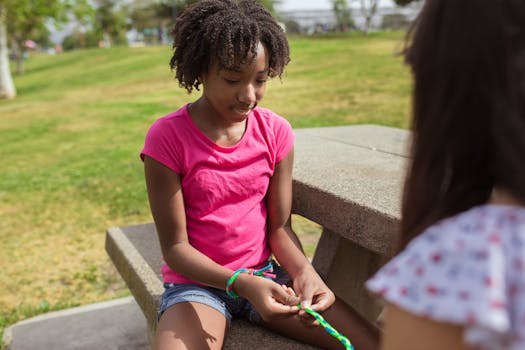As an affiliate, I earn from qualifying purchases, but this doesn't affect the reviews or recommendations—your trust is important to me!
Creating Your Own DIY Volcano Science Experiment At Home

Today, We're Making:
- - Building a DIY Volcano Science Experiment
- - DIY Lunar Calendar - Given that the date is close to the middle of the year, kids could construct their own lunar calendar for the remainder of 2025. This would involve researching the various phases of the moon and understanding how they work, and then creating a visual calendar that tracks these phases over time.
- - Budget Solar Power - Kids could be tasked with finding a way to build a simple solar-powered device, possibly using inexpensive materials like a solar garden light. This can teach them not only about how solar power works, but also about budgeting resources and thinking about sustainability.
- - Homemade Hydrometer - A hydrometer is a device that measures the density of a liquid compared to water. This could be created using simple household goods like a straw.
Imagine the look of pure fascination on your child's face as they witness the explosive magic of a volcano right in your kitchen.
Building a DIY Volcano Science Experiment is an exciting way to bring education into your home and inspire a love for learning in the hearts of your little ones. This at-home science experiment is not only a spectacular spectacle but also an opportunity for hands-on learning that transforms your home into an engaging laboratory.
Offering STEM activities for children, this DIY project encourages young minds to explore science in a dynamic and fun way.
So, are you ready to create a memorable, educational, and thrilling DIY volcano eruption? Let's get 'started!
DIY Volcano Science Experiment: A Fun and Educational Journey
Setting the Stage: Building a DIY Volcano Science Experiment
Embarking on a DIY Volcano Experiment is as thrilling as it is educational. The process begins with bringing to life a visually compelling Volcano Model right in your home. You might be wondering if the task is challenging, but trust me, it's easier than you might think. All you need are a few basic supplies to get started, most of which you probably already have in your house: a bottle, baking soda, vinegar, food coloring, dish soap, water, and some papier-mache to create the volcano’s exterior.
Turn this setup phase into an engaging opportunity for Hands-on Learning Activities. Let your children form the base of the volcano, while you supervise the addition of more intricate details. It's a great way to nurture creativity while getting them excited about the eruption phase.
Understanding the Science Behind the Fun
A Homemade Volcano isn’t just a fun DIY project. It presents a prime chance to delve deeper into STEM Activities for Children. Break down the scientific principle that makes the DIY Volcano Eruption possible. In simple terms, your DIY School Projects are demonstrating the concept of a chemical reaction.
Explain how combining vinegar (an acid) and baking soda (a base) results in the eruption. This reaction produces a gas called carbon dioxide, creating bubbly foam simulating volcanic lava. Making this connection helps your children understand how the fun experiment is rooted in real scientific concepts.
Stepping Into the Role of a Junior Scientist at Home
Encouraging children to take ownership of their DIY Educational Projects enhances their involvement and retention. Let your child play the scientist's role during the volcano's eruption for that authentic At-home Science Experiment experience. Take turns predicting how high you think the 'lava' will go and why. The excitement and anticipation that builds pre-eruption ignite genuine curiosity about science.
Linking Science to Real-Life Phenomena
After the fun and exhilaration of the Easy Science Experiments, circle back to real-life applications. Talk about how actual volcanoes function in nature, comparing them to your homemade version. Discuss why scientists study volcanoes and how our DIY Volcano Eruption gave a small preview of their work. This discussion creates a stronger connection between what happens inside their Indoor Family Fun laboratory and the grander scale of Earth Science.

Through the Wonder of a Simple DIY Volcano Science Experiment
Your home became a mini scientific universe sparking joy and curiosity in your children. As a parent—or a fellow junior scientist—you played a key role in engaging their young minds with an interactive, educational challenge.
The laughter and surprise during the eruption, the insightful conversation about real-life volcanic activities, and the satisfaction of a hands-on STEM project, all contributed to a memorable learning experience.
Like a small kernel of baking soda in a child's mind, may this experiment bubble up a lifelong fascination for science—from your kitchen, to the classroom, and beyond.
Now, Every Time They See A Volcano, They'll Remember This Day
Which is the real beauty of hands-on, fun education at home. So, what's the next kitchen-sink science adventure? Only time will tell. One thing is certain: the world of science is always waiting for us to roll up our sleeves and dive in!

You May Also Like These:
DIY Lunar Calendar
Create your own Lunar Calendar and track the Moon's phases throughout the year with this fun and informative DIY STEM Project.
Ingredients:
- A3 Size Black Poster Board
- White Paint
- Paintbrush
- Chalk
- A Silver Permanent Marker
- A White Permanent Marker
- Round Objects of Varying Sizes (e.g small bowls, pots)
- A Calendar (for reference)
Instructions:
- On the Poster Board, draw a line down the center using your chalk.
- Label the left half of the board as the first six months of the year and the other half as the last six months using your white permanent marker.
- Divide each half again into six rows with your chalk, representing the months.
- For each month, divide it into roughly 4 columns. These represent each of the weeks in the month, with an extra area for overflow depending on how long the month is.
- For each week, use the round objects as a template to paint the different moon phases using the white paint and brush. The different sizes will represent the waxing and waning phases of the moon.
- Use this month's moon phases as a guide for your first set. You can research the moon phase for any given day online.
- Fill in the appropriate moon phase on the calendar for every day of the month. Repeat this process for the rest of the year.
- Once the paint has dried, use the silver permanent marker to outline the moon phases and add any additional details.
Your DIY Lunar Calendar is now ready! As the months go by, you can track the phases of the moon and even predict what it will look like on any given day. This is a great tool for learning about Lunar Cycles, Time, and Astronomy.
Budget Solar Power Project for Kids
Overview
This simple, fun, and educational STEM project will walk you and your kids through the steps to build a solar-powered device. By following this guide step-by-step, your child will learn the basics about solar energy and how it functions.
Ingredients
- Solar Panel 1-2W
- Simple electric motor (1.5 - 3V)
- Propeller Blade (can be from a small toy, fan, etc.)
- Alligator clip wires (2 pieces)
- Cardboard
- Glue
Steps
- Select a place: Choose a well-lighted spot where sunlight is abundant and direct.
- Set up the solar panel: Place the solar panel on the selected spot ensuring that it gets direct sunlight.
- Attach the motor: Glue the electric motor on a cardboard base. Make sure it is stable and won't move.
- Connect the solar panel and the motor: Use alligator clips to connect the solar panel and electric motor. One clip should connect the solar panel's output to the motor's positive (red) wire. Connect the other clip from the solar panel's second output to the motor's negative (black) wire.
- Attach the propeller: Attach the propeller blade directly to the shaft of the motor.
- Ready the setup: Position the assembly under the sun and observe your solar-powered device in action.
Project Timeline Overview
Week 1:
Introduction to Solar Energy Basics
Week 2:
Gather all ingredients
Week 3:
Build the Solar-Powered Device
Week 4:
Evaluate and test the device
Week 5:
Discuss learnings, findings, and improvements
Learning Opportunities
Through this project, kids explore solar power, electricity, and the mechanics of energy conversion. This activity could inspire the engineers and environmental scientists of tomorrow!
Budget Solar Power STEM Project
A fun and educational project for kids, teaching them about renewable energy and solar power by building their own simple solar-powered device.
Ingredients:
- Solar panels
- DC electric motor
- Toothing gears
- AA battery holder
- Rechargeable batteries
- Plastic body
- Screws
- Wheels
Instructions:
- Mount the solar panel on the top part of the plastic body using screws.
- Attach the DC electric motor to the solar panel.
- Place the toothed gears on the motor's rod, and align them with wheels' notches.
- Attach the wheels to the bottom part of the plastic body.
- Connect the AA battery holder to the motor, and place the rechargeable batteries inside.
- Ensure all parts are firmly attached and secured.
- Expose the device to the sun and watch it move by solar power.
Note: This project should be done under adult supervision.
Solar Garden Light STEM Project
Materials Needed:
- A solar garden light
- A clear area with direct sunlight
- Paper and pen
Instructions:
Step 1: Understand How Solar Light Works
Explain to your child that the solar garden light works by absorbing sunlight through its solar panel during the day. This sunlight is converted into electricity and stored in the battery of the light. At night, the solar light turns on automatically, using the stored electricity.
Step 2: Location Selection
Help your child select a location that gets direct sunlight for most of the day. This will ensure maximum absorption of solar energy, leading to longer illumination during the night.
Step 3: Monitor the Light
Ask your child to monitor the solar light throughout the day and take note of when it turns on and off. This will help them understand the concept of solar power storage and usage.
Step 4: Document the Observations
At the end of the day, sit with your kid to review their observations. Help them to understand how the solar light worked, and relate the process to how solar power can be used as a renewable source of energy.
Step 5: Discussion and Questions
Encourage questions and answer them to the best of your ability. Explain how solar power is a sustainable and renewable energy source, and discuss the importance of using such sources in today's world.
Homemade Hydrometer
A hydrometer is a device that measures the density of a liquid compared to water. This STEM project guides you on how to create a simple, homemade hydrometer using basic household items.
Ingredients:
- A transparent, tall container
- Tap Water
- Salt
- A Straw
- Small Plasticine ball (or similar weight)
- Marker Pen
Instructions:
- Fill the transparent container with tap water.
- Attach the plasticine ball to one end of the straw. Make sure it is securely affixed.
- Place the straw (with the plasticine end down) into the container of water. It should float upright.
- Mark the water level on the straw using the marker pen.
- Add a few tablespoons of salt to the water, stir until dissolved.
- Put the straw back into the saltwater. Observe if there's a difference in the water level on the straw.
- The change in the water line on the straw is because the saltwater is denser than tap water. This simple homemade hydrometer is showing the difference in density between the two liquids.
Care and Sustainability:
Remember to thoroughly clean the container and straw after using them for the project, so they can be safely reused later.
This project is an excellent way to learn while recycling household items, demonstrating a commitment to sustainability and resourcefulness.











